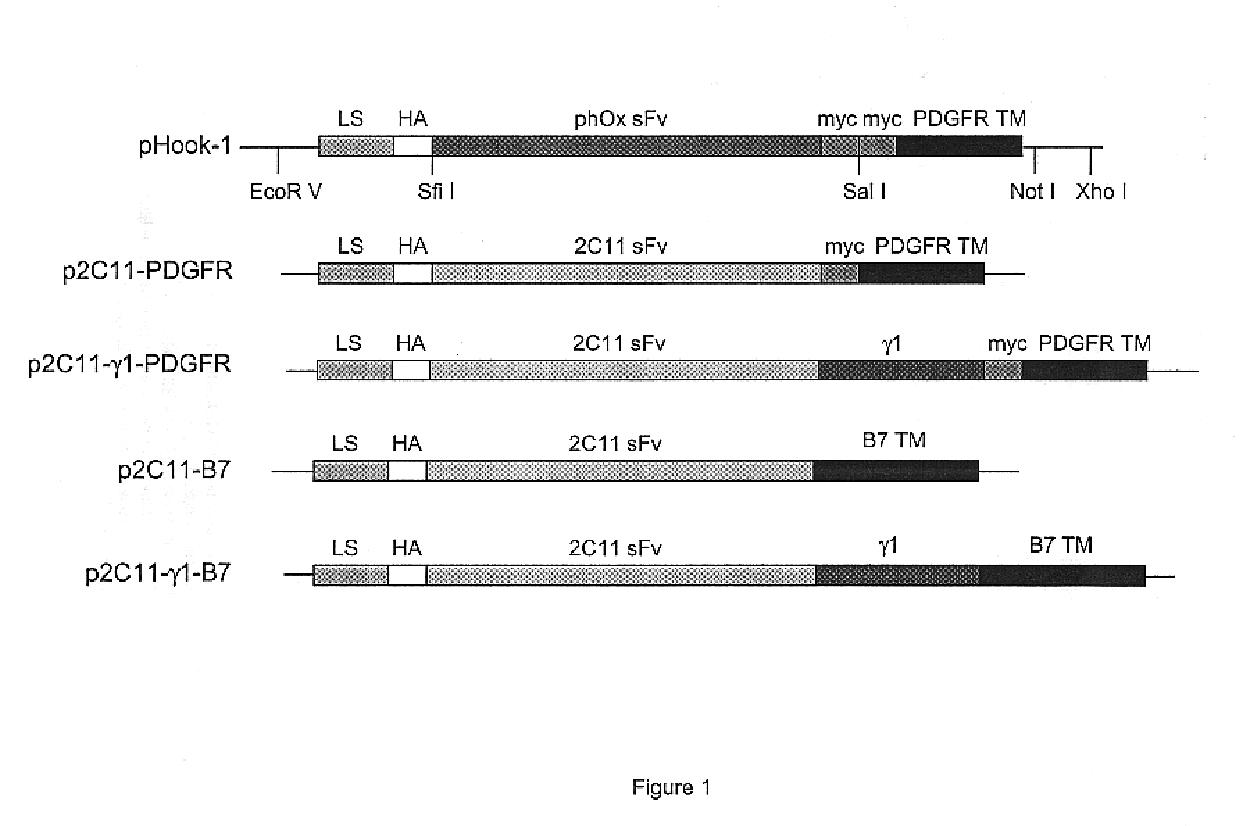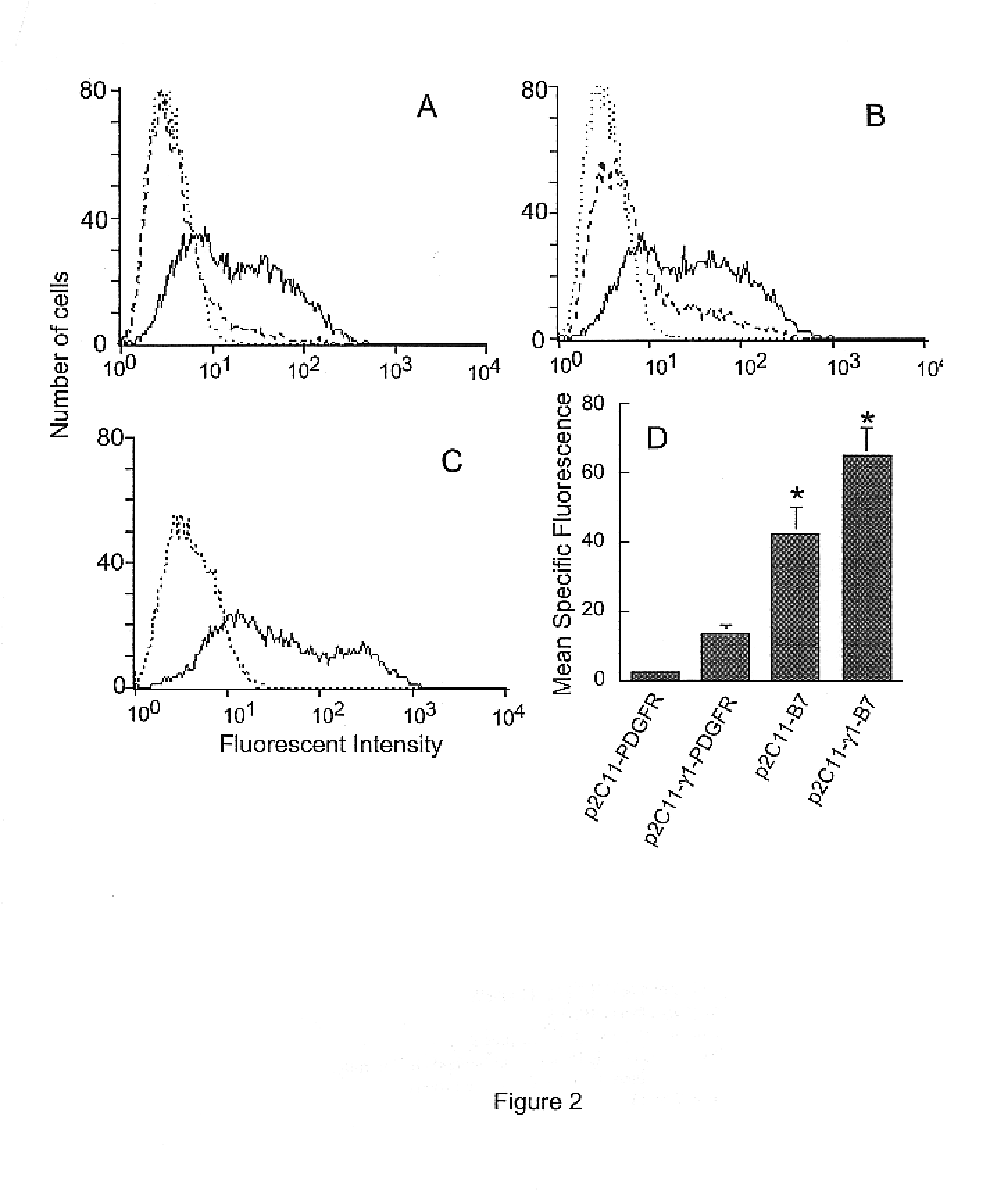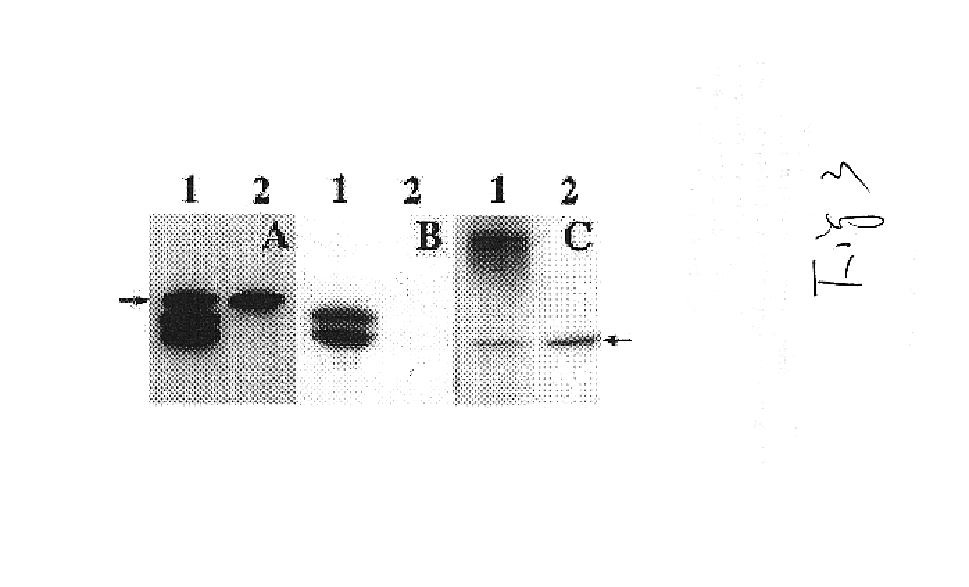Chimeric protein and method of controlling tumor growth using the protein
a protein and tumor technology, applied in the field of chimeric proteins, can solve the problems of tumor cell lysis, bispecific antibody intravenous administration can induce systemic cytokine release and toxicity, and many tumors,
- Summary
- Abstract
- Description
- Claims
- Application Information
AI Technical Summary
Benefits of technology
Problems solved by technology
Method used
Image
Examples
Embodiment Construction
The following described embodiment demonstrates that a chimeric protein, 2C11scFv, can be expressed on the surface of tumor cells and that such expression enhances T cell activation which leads to lysis of the tumor cells.
Surface Expression of scFv-TM Chimeric Proteins
The cDNA encoding the 2C11 single-chain antibody (2C11scFv) was generated by RT-PCR from 145.2C11 hybridoma cells. mAb 145.2C11 is an antibody, which binds to the epsilon chain of the CD3 complex on murine T cells. With reference to FIG. 1, p2C11-.gamma.1-PDGFR was constructed by replacing the single-chain antibody cDNA in pHook-1 with the gene encoding 2C11scFv and inserting the .gamma.1 domain sequence (hinge-CH.sub.2 --CH.sub.3 region) of human IgG, between the scFv and TM cDNA. This plasmid encodes a chimeric protein composed of the murine immunoglobulin .kappa. chain signal peptide, an HA epitope, the anti-CD3 scFv gene, the .gamma.1 domain, a myc epitope and the transmembrane domain (TM) of the PDGFR (platelet-de...
PUM
| Property | Measurement | Unit |
|---|---|---|
| radioactivity | aaaaa | aaaaa |
| pH | aaaaa | aaaaa |
| TM | aaaaa | aaaaa |
Abstract
Description
Claims
Application Information
 Login to View More
Login to View More - R&D
- Intellectual Property
- Life Sciences
- Materials
- Tech Scout
- Unparalleled Data Quality
- Higher Quality Content
- 60% Fewer Hallucinations
Browse by: Latest US Patents, China's latest patents, Technical Efficacy Thesaurus, Application Domain, Technology Topic, Popular Technical Reports.
© 2025 PatSnap. All rights reserved.Legal|Privacy policy|Modern Slavery Act Transparency Statement|Sitemap|About US| Contact US: help@patsnap.com



